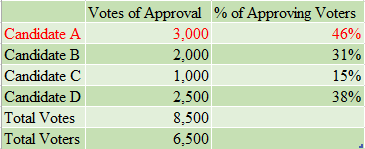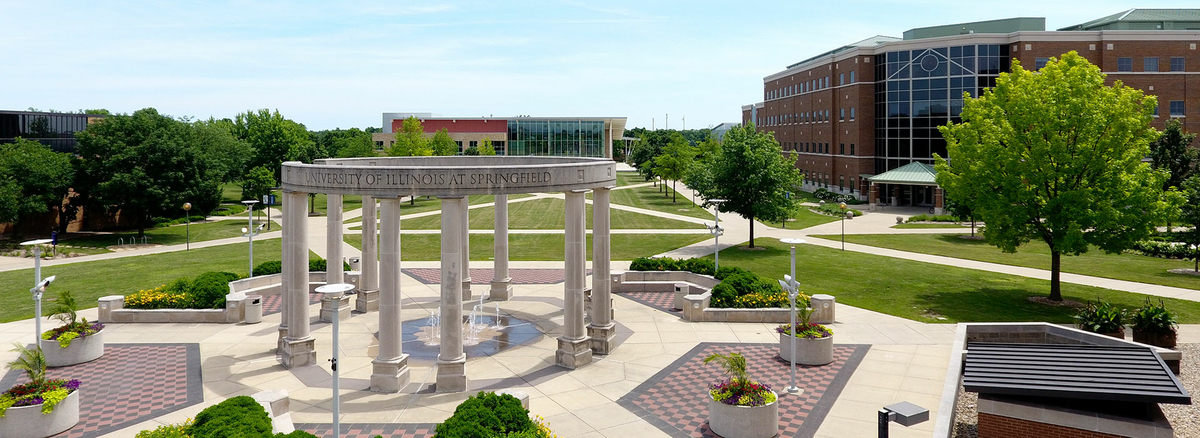
Introduction
A recurring finding among researchers is that American voters have grown dissatisfied with the electoral system in America.[1] Dissatisfied voters have begun calling for changes to the electoral system. This has prompted some states and local governments to implement new ways of voting to help address this dissatisfaction. Voting systems such as Ranked Choice Voting (RCV), Approval Voting, and Point/Score Voting are some of the main alternative electoral systems these governments are adopting. The next couple of paragraphs will define these reforms to provide context. After that, I’ll talk a bit about some research the staff and faculty of the Center for State Policy and Leadership recently published in American Politics Research, a peer-reviewed academic journal.
Ranked-Choice Voting
Ranked-Choice Voting (also known as Instant Runoff Voting or IRV) is an emerging method of voting that is characterized by its inclusive voting structure. The inclusiveness is rooted in the system’s ability to allow voters to have an impact on election outcomes even if their first-choice candidates do not win. The basis of the system relies on the ranking of candidates and re-allocating the votes of candidates who are no longer considered viable, until a candidate obtains a majority of the vote. Simply put, if there are five candidates, each candidate can be ranked from 1-5 if the voter chooses to do so, but the voter does not have to rank all the candidates. In fact, some jurisdictions limit the number of candidates to a certain number to avoid overly burden voters. Regardless, by ranking some or all of the candidates on the ballot, a voter will have the opportunity to not only vote for their favorite candidate, but also potentially change the outcome of the election with allocation of their ensuing votes, if necessary.
RCV is able to counteract the winner-take-all plurality system since candidates cannot win the election without receiving a majority of votes. If no candidate has initially reached 50%+1 of the vote in the first tabulation of votes, the candidate with the fewest number of votes, is eliminated from contention. When this occurs, as shown with Candidate D’s votes in Figure 1, the eliminated candidate’s votes are reallocated according to the order in which the other candidates were ranked.

In Round 2 of Figure 1, the reallocation process plays out. Based on this scenario, Candidates A and B both were ranked 2nd by 500 of each of Candidate D’s voters. Candidate C was also ranked 2nd by 300 of Candidate D’s voters, and these votes were redistributed accordingly. This process continues until a candidate reaches 50%+1 or more of the vote, as shown in Round 3 of Figure 1. There is flexibility with this method as well; Ranked Choice Voting can be used for single-winner or multi-winner elections. The system can further be explained through Figure 2 below.2[2]

Approval Voting
Another alternative voting method implemented in places like St. Louis, MO and Fargo, ND is a system known as Approval Voting. As the name suggests, voters can cast votes for all of the candidates in which they approve holding the office. This means they can cast more than one vote. Voters do not have to approve of multiple candidates, but the idea is that allowing more leeway with voting would produce a candidate that satisfies more of the population. In the end, the candidate that has been approved of by the highest number of voters wins the election.

In multi-winner elections the process is the same, and the candidates who are most approved of are the ones who obtain office. In general, this practice and the reason behind it does not differ much from Ranked Choice Voting. However, the method does not explicitly require the candidates to reach a majority. Theoretically, approval voting could still produce a plurality winner as shown in Figure 3, or a situation where multiple candidates are approved of by more than a majority of the population as shown in Figure 4.

Point or Score Voting
Further, the concept of Point or Score Voting would be another way to give voters more leeway in expressing preferences, specifically, on a scaled system. This method is traditionally used for single-winner elections, whereby voters can assign a score, based on a given range, to reflect their interest or disinterest in candidates. When tallying votes, the candidate with the highest average score would be declared the winner, as shown in Figure 5. Unlike Ranked Choice Voting or Approval Voting, voters would not want to leave scores blank for any candidates they dislike. Blank scores are not incorporated into the overall tally. Candidates that are not preferred should be given low scores, while the preferred candidates should be given the highest score. Although, leaving a score blank could be a useful tactic for voters who may not know a lot about a certain candidate but do not necessarily want to punish them.

Original UIS Research
Much of the existing research on these alternative systems is centered on Ranked-Choice Voting (RCV), as it is currently the most commonly enacted electoral reform. RCV has been found to increase the proportion of elected officials who are racial minorities, women, or both (Buckley et al., 2015; Burnham 1997, 2013; Engstrom, 1990; Hirczy, 1995; John et al., 2018; McGing, 2013). Additionally, RCV campaigns tend to be less divisive in nature, according to both candidates and voters (Donovan 2014; Donovan, Tolbert, and Gracey 2016). The logic is that due to the fact a candidate may need supporters of other candidates to rank them second in order to win candidates are less likely to campaign negatively and instead focus on appealing to those supporters with arguments of why they should be a second pick. In fact, we have even seen candidates in RCV elections campaign with opponents and promote one another as a second pick. Existing research also highlights some possible issues with voter understanding RCV at least initially (Jacobs and Miller 2013; Jacobs and Miller 2014; McDaniel 2016), the importance of voter education campaigns to help understanding (Shineman 2016; Boudreau, Colner, and MacKenzie 2020), and approval of the system in diverse areas that use it (Common Cause of New York 2021).
One of the arguments supporters of RCV put forward is that implementing RCV would break the so-called “stranglehold” of the two major political parties in America. Considering that two-thirds of Americans want a major third-party option and dissatisfaction with the two major parties is high understanding whether this argument holds any weight is important to understand (Drutman et. al 2018). Further, this claim has been made without empirical evidence backing it up.
As an explanation for why RCV may improve the electoral performance of third-parties, researchers continuously find that in America’s current electoral system when a voter’s most preferred candidate has little chance of winning and the voter prefers one of the remaining viable candidates over the other, the voter will cast their ballot for their second, more viable, choice. Politicians and their supporters use such arguments to pull potential supporters of third-party candidates towards a major party candidate. Such tactics, and additionally mentioned concerns of benefiting least preferred candidates, all result in supporters or potential supporters of third-party candidates being concerned that they are “wasting their vote” or helping their least preferred candidate win. RCV would change this dynamic by allowing voters to vote with their “heart” on their first choice and their “head” with their second choice, without benefiting their least preferred candidate.
In order to explore this research question, the CSPL research team conducted a survey experiment in which one group voted using ranked choice voting and the other utilized the current American first-past-the-post voting system. Conducted in the build up to the 2020 US Presidential election, the survey asked the respondents who they would choose to vote for given the candidate pool of Joe Biden, Howie Hawkins, Jo Jorgensen, and Donald Trump. Each of these candidates were included as they had ballot access in enough American states to theoretically win the Electoral College. Ranked choice voters were given instructions on how to vote using the ranking system in line with what is used by RCV jurisdictions in real life. Common influences on voting behavior such as age, education level, race, ethnicity, gender, satisfaction with democracy, sentiments related to the candidates, and evaluations of political knowledge were accounted for. The outcome variable was the percent of “votes” for third-party candidates in the current plurality electoral system and the first round of voting in a ranked-choice voting systems.
Ultimately, based on the study’s findings, the group that “voted” using the RCV system (7%) were nearly twice more likely to vote for third party candidates than the current electoral system (3.8%). In summary, the teams findings suggests that perhaps ranked-choice voting is one potential solution to curtail some of the electoral dissatisfaction that is so common in the United States through providing increased viability of alternative political parties. At the very least, the findings of this study suggests that claims from supporters of RCV that it could improve the electoral fortunes of these parties may be credible. Of course, more research is needed as this is an initial attempt to understand the relationship between RCV and third-party support, as well as numerous other research questions related to RCV and other alternative election systems.
If you would like to read our full article, or to see citations mentioned in this post, you can find it on Sage Journals.
______________________________
Nolan Flaherty recently completed his Bachelors in Business Administration with a concentration in Finance and minor in Political Science at UIS. He has spent the past two years as an undergraduate research assistant in the Center for State Policy and Leadership.
_______________________________
References:
[1] https://today.yougov.com/topics/politics/articles-reports/2021/06/22/americans-are-dissatisfied-democracy; https://www.pewresearch.org/global/2020/02/27/satisfaction-with-democracy/; https://www.vox.com/mischiefs-of-faction/2018/10/31/18042060/poll-dissatisfaction-american-democracy-young
[2] https://electionscience.org/library/approval-voting-versus-irv/



